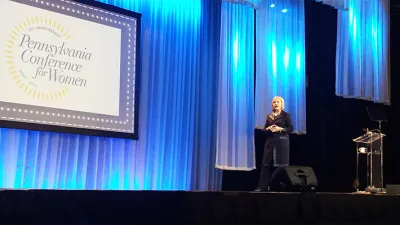
Women’s Work: Still Not Done
Growing up, it never occurred to me that I would be afforded fewer opportunities than any male my own age. Inequality of gender wasn’t on my radar.
So it certainly never occurred to me that once I reached my 30s, women would still constitute less than 20 percent of all seats in the U.S. Congress – and an unbelievably pathetic 4.3 percent of the CEO positions at Fortune 1000 companies.
And if you had told me 20 years ago that I would, in 2013, attend a conference where one of the main topics of conversation would be the “glass ceiling,” my young jaw might have dropped. But with statistics like these, we still have a long way to go before we can relegate that glass ceiling to its proper place: the tomes of history.
At the 10th annual Pennsylvania Conference for Women, an event sponsored by Drexel LeBow and attended by more than 7,000 women and men, Hillary Clinton and other esteemed leaders such as Madeleine Albright and Sallie Krawcheck shared their trials and triumphs and called for further progress.
There’s no doubt that women have made some great strides. A new study by Pew Research reveals that women’s hourly wages are now 84 percent those of men – and among millennials (ages 25 to 34), it’s 93 percent. These numbers have greatly improved over the past 20 years, when women were earning closer to 75 cents for every dollar earned by a man. But, they still indicate that a substantial wage gap exists in our society.

And, based on a few key female politicians who have risen close to the top of the electoral process during the past decade, I can now confidently say I think I’ll live to see a woman elected president. (Only time will tell, but I may even have heard one speak at the conference.)
I hope that by the time my 2- and 3-year-old daughters reach their 30s, the idea of a female president, a female majority in Congress or a female CEO is no longer novel.


